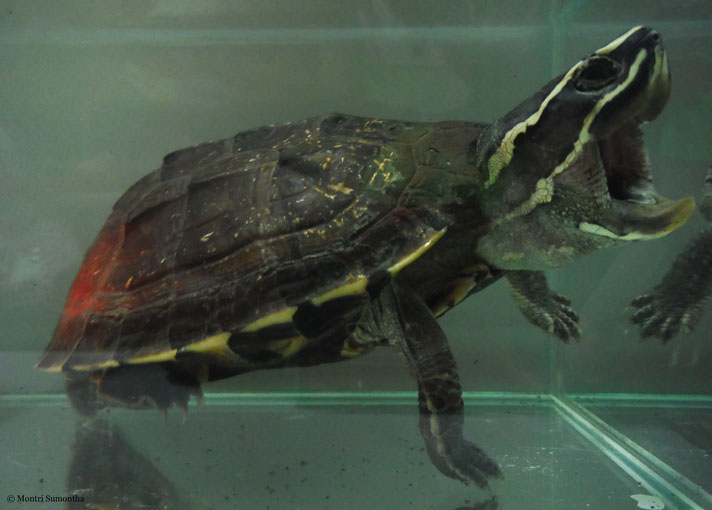Malayemys isan, a species new to science, was discovered in a Thai fish market.
Researchers in Thailand have discovered a new species of snail-eating turtle, not in its native habitat, but rather, in a local food market.
The turtle, Malayemys isan, was noticed last year by Dr. Montri Sumontha of Thailand's Ranong Marine Fisheries Station. Sumontha visited the market to look at the fish and other fresh foods when he noticed a snail-eating turtle amongst others that didn’t look like any species that he could recall. He saw the turtle again at another market and after confirming that the chelonian was caught in a nearby canal, Sumontha bought a few to study and to try and confirm his suspicions that the turtle was indeed a species new to science.
“I compared the turtle with a closely related species, M. macrocephala, and many parts of both turtles were different, such as marking, color, shape of shell, head and scales, and no known overlapping of the distributions of each species of turtles made me confident that this was a new species,” Dr. Sumontha told WWF.
Want To Learn More?
49 Herps Discovered in Southeast Asia
Thai Smugglers Captured With An Estimated 14 Percent Of Ploughshare Tortoises Population
Sumontha said that the turtle must be protected if it is going to survive.
“I have collected data and information on human threats to wildlife, such as growth of infrastructure, dikes and dams, which has led to turtle populations declining in Thailand. Protection of turtles needs to be emphasized in Thai law as soon as possible.”

DR. MONTRI SUMONTHA
Malayemys isan is different from its closest relative, M. subtrijuga, in that it has two nasal stripes (M. subtrijuga has six to nine), and a thin infraorbital stripe that does not reach the turtle’s lower seam.
Malayemys isan is different from its closest relative, M. subtrijuga, in that it has two nasal stripes (M. subtrijuga has six to nine), and a thin infraorbital stripe that does not reach the turtle’s lower seam. It lives in the Mekong River Basin of northeastern Thailand, and in nearby Vientiane in Laos.

